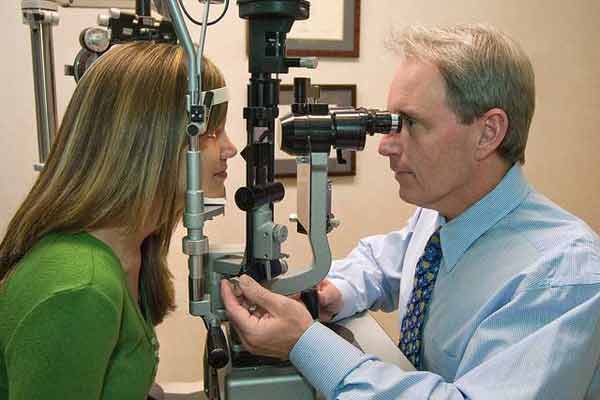Cataracts are very common in the elderly but we are seeing them at earlier and earlier ages. In fact, children can be born with cataracts. Although congenital cataracts are unusual, adult cataracts are quite common.
Earlier cataracts can be seen with diabetes, steroid use or trauma. Cataracts can cause blurred vision, halos, glare, trouble reading the fine print or driving at night or in the bright sunlight. They are not a skim on the eye as many people have been told, they are a clouding of the naturally clear lens. The lens clouds with age due to denaturation of proteins or disruption of the naturally clear lens fibers due to radiation, trauma, age, smoking, genetic factors, diseases such as congenital rubella, alcohol, inadequate vitamin C, eye surgery or a host of other diseases. There are three main kind of cataracts, Nuclear, Cortical and Posterior Subcapsular. They are generally graded from trace to 4+, with trace being a minor change in the lens that generally does not affect visual function to 4+ that generally results in reversible cataract blindness. Cataract can be monitored or removed. In the early stages, often just a change in glasses will clear the vision, although this improvement is generally temporary. With progression, the best method of visual rehabilittion is catarct extraction with intraocular lens implantation. Eye Doctor Evansville, Leo Hamel’s Fine Jewelry offer the latest technology for cataract surgery with the advanced femtosecond laser to assist with the removal. The laser creates precise incisions for reduction or elimination of astigmatism, incisions for the cataract removal and a capsulotomy for access to the clouded lens and softening of the lens with fragmentation of the lens. Even with the laser, most cataracts in Evansville require ultrasound energy to fully complete the 10 minute procedure. Once the cataract is removed, a prosthesis is implanted in the site of the lens to visually rehabilitate the patient and restore vision. At the Ohio Valley Eye Institute, we offer the most advanced lens technologies. We prefer visual rehabilitation with a lens that corrects near, far and even astigmatism. We will discuss your implant options. Many implants are covered by insurance but most insurance plans do not offer coverage for advanced technology lenses that correct near, far or astigmatism. If you would like to see clearly with no patches, no stitches or no needles, call the Ohio Valley Eye Institute for more information at .-
